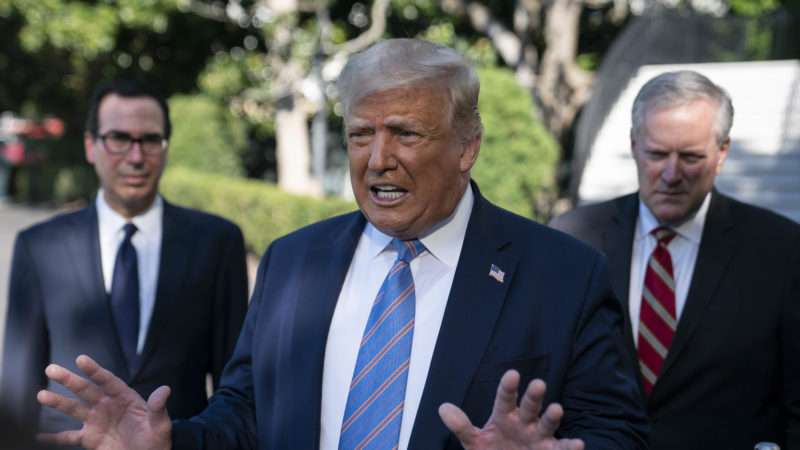From a Kansas Supreme Court majority opinion (by Justice Stegall) earlier this month in State v. Harris (a 4-3 decision):
In Kansas, it is a crime for a convicted felon to possess a knife[, defined] … as “a dagger, dirk, switchblade, stiletto, straight-edged razor or any other dangerous or deadly cutting instrument of like character.” … [F]iguring out when an object is a “knife” because it is a “dangerous or deadly cutting instrument of like character” is not as easy as one might suppose. See, e.g., Crocodile Dundee (Rimfire Films 1986) (“That’s not a knife … That’s a knife.”).
Indeed, no one has argued the statute makes it illegal for convicted felons to possess the utensil commonly used in kitchens to butter bread or slice vegetables. But does it? After all, it is a cutting instrument, is universally referred to as a knife, and it could conceivably be dangerous. Today we are tasked with deciding whether the uncertainty in the residual phrase in [the statute] is so great that the law is impermissibly and unconstitutionally vague. We conclude it is….
Christopher M. Harris is a convicted felon. When he and another man got into an altercation on a Wichita street, Harris pulled out a pocketknife. A police cruiser was in the area and the officer turned his spotlight onto the men. The officer observed Harris dropping an object which turned out to be the pocketknife.
The State charged Harris with aggravated assault, criminal possession of a weapon by a convicted felon, and criminal use of a weapon. At his jury trial, Harris testified he felt in fear of his life and opened the knife only for protection. The pocketknife had a 3 and 1/2-inch blade with serrations. A jury convicted Harris of criminal possession of a weapon and acquitted him of the other two charges….
Most litigation concerning vagueness in statutes has tended to focus on the due process elements of the vagueness doctrine. Does the statute fairly put people on notice as to the conduct proscribed? Are the words used common and understandable enough to allow persons of ordinary intelligence to easily grasp their meaning? This hurdle is often described as requiring no more than a “‘commonsense determination of fundamental fairness.'” … And when the analysis is confined to these questions, the rationale of the Court of Appeals panel—as well as the dissent—[rejecting the vagueness challenge] is understandable. The statute bars possession of knives by convicted felons. A pocketknife is a knife. People of ordinary intelligence are on notice as to what conduct the statute restricts, and the demands of fundamental fairness are met.
But our focus today is on the second hurdle—the one intended to ensure that the Legislature has not impermissibly delegated its authority to write the laws to officials or actors in either the executive or judicial branches of government…. The primary problem with a law that fails to “provide explicit standards” for enforcement … is that such laws “invite arbitrary power.” That is, these laws “threaten to transfer legislative power to” police, prosecutors, judges, and juries, which leaves “them the job of shaping a vague statute’s contours through their enforcement decisions.”
Because an impermissible delegation of legislative power will often lead to arbitrary enforcement based on subjective or even prejudicial criteria, the United States Supreme Court has indicated that the “more important” prong of the “vagueness doctrine ‘is not actual notice, but the other principal element of the doctrine—the requirement that a legislature establish minimal guidelines to govern law enforcement.’ [Without these], a criminal statute may permit ‘a standardless sweep [that] allows policemen, prosecutors, and juries to pursue their personal predilections.’ [Citations omitted.]” See also United States v. Davis (2019) (“Vague statutes threaten to hand responsibility for defining crimes to relatively unaccountable police, prosecutors, and judges, eroding the people’s ability to oversee the creation of the laws they are expected to abide.”); United States v. Reese (1875) (“It would certainly be dangerous if the legislature could set a net large enough to catch all possible offenders, and leave it to the courts to step inside and say who could be rightfully detained, and who should be set at large. This would, to some extent, substitute the judicial for the legislative department of the government.”).
It is the very overbreadth of such laws that renders them impermissibly vague. It is not necessarily because they are ambiguous on their face—an overbroad law can be very clear. The problem, in fact, may be amplified by clarity. If a law “makes everyone” a violator, then “prosecutors and the police [will] both define the law on the street and decide who has violated it.” This is a world in which “almost anyone can be arrested for something.” Nieves v. Bartlett (2019) (Gorsuch, J., concurring in part and dissenting in part).
It is appropriate to call such clear-but-overbroad laws “vague” because by failing to provide adequate enforcement guidelines, the Legislature has left it up to other actors to give the law teeth through their enforcement decisions and actions. As Justice Robert Jackson once wrote, without clear legal standards to guide us, we human beings “usually end up … condemning all that we personally disapprove and for no better reason than that we disapprove it.”
Within constitutional boundaries, legislators have this liberty. This is by design. Prosecutors, judges, law enforcement officers, and juries—that is, actors constrained by the law—do not have such freedom. This, too, is by design. Whether or not a person is arrested, charged, and convicted for violating a law must depend more on objective and discernable legal rules than on the mere discretion, guesswork, or whim of government officials. See Davis (“Only the people’s elected representatives in the legislature are authorized to ‘make an act a crime.'”)….
Today’s case gives us a textbook example of the … enforcement guesswork that can result from a vague law. The statute makes it a crime for Harris to possess a weapon. A weapon “means a firearm or … a dagger, dirk, switchblade, stiletto, straight-edged razor or any other dangerous or deadly cutting instrument of like character.” It is undisputed that Harris did not possess a firearm, a dagger, a dirk, a switchblade, a stiletto, or a straight-edged razor. In these circumstances, enforcement officials must ask, what exactly is a dangerous cutting instrument of like character? We are unable to discern a sufficiently objective standard of enforcement in this language. Instead, we are left with the subjective judgment of the enforcement agencies and actors. A pair of scissors? Maybe. A safety razor blade? Perhaps. A box cutter? Probably, but would that decision be driven by an objective rule or a historically contingent fear of box cutters?
The dissent chides us for reciting these hypothetical examples, though in doing so it issues its own subjective interpretation of what really counts as a knife. The dissent goes so far as to attempt to distinguish between the relative deadliness of the cutting edges on a box cutter (prohibited) and a pair of scissors (not prohibited). But the statutory language at issue—”dangerous or deadly cutting instruments of like character”—does not permit such fine distinctions….
[A] legislative enactment … has impermissibly delegated legislative power to the executive and judicial branches. Thus, we hold that the residual clause in K.S.A. 2019 Supp. 21-6304 is unconstitutionally vague….
From Justice Biles’ dissent:
The “pocketknife” in this case features a sharp, serrated blade, 3 and 1/2 inches long, that folds back into its handle. It is about 7 inches long fully extended. And even though the oversized bowie knife of Crocodile Dundee movie fame dwarfs it by comparison, it cannot reasonably be mistaken as something outside the foreseeable statutory meaning of “knife” in a measure designed to keep convicted felons from possessing a weapon…. I dissent because the majority’s decision inappropriately conjures facts not supported by the record, while improperly drifting past the undisputed facts in favor of hypotheticals. And by doing this, the majority imposes too strict of a standard on the Legislature’s ability to formulate criminal laws by now requiring “an explicit and objective standard of enforcement.”
That said, Christopher Harris may still prevail. In my view, he is entitled to pursue the mistake-of-law defense denied to him by the district court. I would reverse his conviction on that basis and return this case to the district court for a new trial….
The directive to consider a statute’s vagueness in the actual context of the facts should control. Courts decide whether a statute is vague as applied to the particular facts at issue because a litigant who engages in clearly proscribed conduct cannot complain about a law’s vagueness as applied to someone else’s conduct….
Analyzing K.S.A. 2019 Supp. 21-6304(c)(1) in light of the facts in Harris’ case reinforces our two traditional analytical polestars: (1) the statute is sufficiently clear to have informed him it was unlawful to possess his knife, and (2) the statute is sufficiently clear to stave off any contention that authorities arbitrarily prosecuted him for having it….
The criminal-possession statute makes clear not all objects with a blade are prohibited. It provides instead that “‘[k]nife’ means a dagger, dirk, switchblade, stiletto, straight-edged razor or any other dangerous or deadly cutting instrument of like character.” This statutory description supplants the term’s ordinary meaning. And the phrase with which we are concerned—”dangerous or deadly cutting instruments of like character” is given understandable dimension by the five listed items that precede it—dagger, dirk, switchblade, stiletto, and straight-edged razor.
When the Legislature decided to use the word “means” in defining “knife,” it made that definition both complete and exclusive. And nothing can be added or deleted by interpretation. So the majority’s hypothetical examples (“[a] pair of scissors and [a] safety razor blade”) would be excluded from the Legislature’s restrictive definition of “knife.” Similarly, and as the majority seems to concede, its box cutter example may very well fit within the restrictive definition of “knife.”
Nevertheless, the five descriptors provided are easily and reasonably understood to describe per se dangerous or deadly cutting instruments. The dictionary defines “dagger” as “a weapon with a short, pointed blade, used for stabbing”; “dirk” as “a long, straight dagger”; “switch-blade” as “a large jackknife that snaps open when a release button on the handle is pressed”; “stiletto” as “a small dagger, having a slender, tapering blade”; and “straight razor” as “a razor with a long, unguarded blade that can be folded into the handle.” And this then carries through for the disjunctive phrase “or any other dangerous or deadly cutting instrument of like character,” which is simply intended to prevent convicted felons from carrying a broader range of dangerous or deadly cutting instruments with features similar to those listed. Most importantly, the statutory language does not insert subjective judgment unmoored from the statute’s specifics. Harris’ knife—with its sharp, serrated, 3 and ½-inch blade that folds into its 4-inch handle—falls well within this statute’s foreseeable bounds….
If we embrace the majority’s view, our standard for the appropriate degree of specificity is transformed from a requirement for commonsense adequate protections against arbitrary and discriminatory enforcement to an unbearably exacting requirement that all statutes making specific conduct criminal must be wholly expressed by the Legislature. This goes too far.
The Justices also disagreed on the significance of certain statements by the state about the knife prohibition. The majority:
Harris [had] sought approval to introduce evidence that the State of Kansas—through Harris’ parole officer Alexis Olave—had told him that the pocketknife was not a prohibited knife. Harris proffered evidence that before the incident, Olave had advised Harris that he could carry the precise knife at issue, and he relied on that advice. Harris also provided a letter he had received from Olave after the incident in which she told him, “[Y]ou are allowed to have a pocket knife less than 4 inches in length while on post release. However, if the pocket knife is used in a threatening manner, then it can be viewed as a violation or as a crime.” … [The trial court rejected this argument, relying on the State’s argument] that parole officers are not legally authorized to interpret any statutes and so anything Olave may have said was legally irrelevant to a potential mistake of law defense ….
Harris moved to reconsider. Along with the evidence already proffered, he submitted the Kansas Department of Corrections Division of Community and Field Services Supervision Handbook. The handbook stated: “An ordinary pocket knife with a blade no longer than 4 inches is not considered by law to be a dangerous knife, or a dangerous or deadly weapon or instrument.” At a hearing on his motion to reconsider, Harris personally testified, “I went to [s]tate orientation just a couple of months before this, the whole place told me, everybody at that place told me and they give me that [handbook] stating and they told me I could own that knife.” The district court ruled again that Olave’s advice—or implicitly, the advice of anyone at the Kansas Department of Corrections (KDOC)—on what “counted” as a knife under the relevant statute was not an official opinion upon which Harris could rely….
[W]e have [here] a concrete example of government officials expressing and operating under diametrically opposed, yet plausible, enforcement standards—a sure sign of subjectivity in action. The State of Kansas, through its prosecutors, believes (and has acted on its belief) that K.S.A. 2019 Supp. 21-6304 is meant to be enforced against Harris and his pocketknife. But the State of Kansas has also, through its Department of Corrections, published a handbook and advised parolees (including Harris) that K.S.A. 2019 Supp. 21-6304 is not meant to be enforced against Harris and his pocketknife. Even without any bad faith on the part of the government—and the record here gives us no reason to suspect there is—the circumstances present us with an unmistakable instance of arbitrary enforcement of an inherently subjective standard.
The dissent:
The majority further stretches the record past the breaking point by declaring the KDOC handbook is “a sure sign of subjectivity in action.” The majority’s premise is that KDOC was interpreting the statute under which Harris was convicted. The majority then concludes from the handbook that “the circumstances present us with an unmistakable instance of arbitrary enforcement of an inherently subjective standard.” other words, the majority wants the reader to believe the Sedgwick County District Attorney and KDOC both looked at the same statute and independently came to different legal conclusions about its scope, so the statute must be subject to arbitrary enforcement. Let’s consider a far more likely reality.
The Kansas Department of Corrections Division of Community and Field Services Supervision Handbook that Harris was given, after explaining, “You are prohibited from owning, possessing or purchasing any firearms while on supervision with the KDOC,” stated:
“Other prohibited weapons may include brass knuckles, throwing stars, or any other weapon so defined in K.S.A. 21-6301 (criminal use of weapons). An ordinary pocket knife with a blade no longer than 4 inches is not considered by law to be a dangerous knife, or a dangerous or deadly weapon or instrument.”
The record is a little unclear about this part, but it appears Harris received the handbook in 2014. We at least know he entered a halfway house in May 2014. But the inconvenient truth for the majority’s arbitrary enforcement premise is that the law changed in 2013 regarding criminal use of weapons. The 2013 change struck from K.S.A. 2012 Supp. 21-6301 the following language: “except that an ordinary pocket knife with no blade more than four inches in length shall not be construed to be a dangerous knife, or a dangerous or deadly weapon or instrument.” Note how that language parallels the handbook.
This simply means the handbook’s exception derives from statutory language that was outdated when the handbook was given to Harris—and the outdated language was not even from the statute now challenged…. [T]hese circumstances would be proper areas of inquiry as part of Harris’ mistake-of-law defense; but they do not provide an example of arbitrary enforcement of K.S.A. 2019 Supp. 21-6304 as the majority claims.

from Latest – Reason.com https://ift.tt/39E8LJr
via IFTTT




